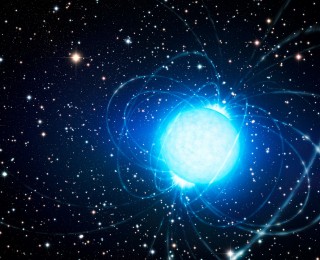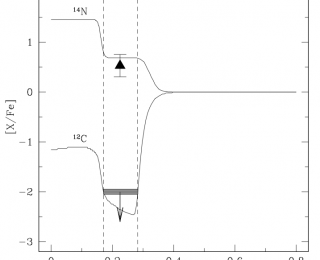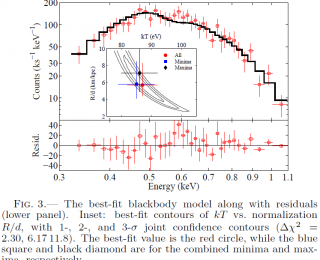
by Ashley Villar | Aug 20, 2015 | Daily Paper Summaries
Extreme transient events are pushing the limits of our standard explosion models, but magnetars may save the day.
by Yvette Cendes | Nov 22, 2013 | Daily Paper Summaries
Title: Evidence of an Asteroid Encountering a Pulsar Authors: P. R. Brook, A. Karastergiou, S. Buchner, S. J. Roberts, M. J. Keith, S. Johnson, R. M. Shannon First Author’s Institution: University of Oxford Pulsars- neutron stars formed during supernovae explosions- are often considered the “precision clocks” of radio astronomy. This is because of two fundamental properties observed from their radio pulses: the average emitted radio beam- known as the pulse profile– remains very stable over decades, and the pulsar has extreme rotational stability thanks to its fast rotation. All pulsars have a rotational frequency, ν, which is gradually decreasing due to a loss of energy, and its change with time, the spin-down rate, tells radio astronomers about the stability of the pulsar. Hundreds of pulsars have been observed to have glitches where the pulsar’s rotational frequency is seen to increase rapidly, and there have even been anti-glitch observations where the pulsar abruptly slowed down, which are thought to be caused by the magnetic fields of the pulsar.But the interesting thing about astronomy is even in a field where things are as precise as pulsars, surprises will still crop up. And this is what happened during a 24-year observing campaign of PSR J0738-4042, when in September 2005 the spin-down rate abruptly changed and a new radio component was observed. In fact, no previously understood mechanism can explain these changes, and the observations led the paper’s authors to propose they witnessed an asteroid encountering the pulsar.The observations were relatively straightforward: PSR J0738-4042 is a bright radio pulsar and was the target of a monitoring campaign by the Hartebeesthoek Radio Astronomy Observatory (HartRAO) in South...

by Josh Fuchs | Jul 11, 2013 | Daily Paper Summaries
What kind of star is orbiting around a millisecond pulsar and where did it come from?

by Maria Drout | Jun 5, 2013 | Daily Paper Summaries
The authors of this article observe a sudden slowing in the rotation rate of a known magnetar. Although hundreds of glitches (a sudden increase in rotation rate) have been observed in radio pulsars and magnetars, this is the first direct evidence for an anti-glitch.

by Susanna Kohler | Feb 1, 2013 | Daily Paper Summaries
We’ve detected planets around pulsars before, but this pulsar has an even stranger signal. Could it be due to an asteroid belt similar to the one in our solar system orbiting it?

by Astrobites | Jan 8, 2012 | Undergraduate Research
This month’s undergrad research post is all about X-rays. Read on to learn more about studying the X-ray counterpart to a radio pulsar, and examining the evolution of galaxies using X-ray emission.





